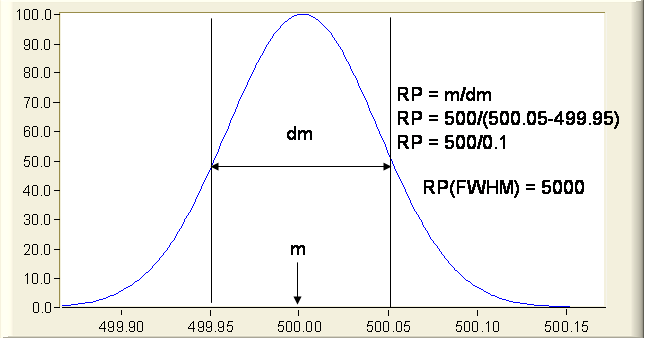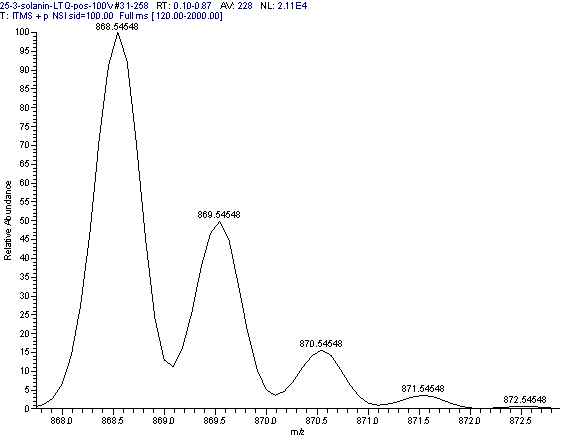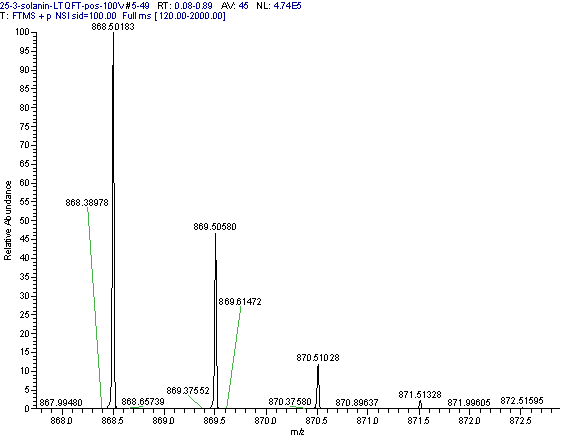The terms resolution and resolving power are derived from optical spectroscopy. Older publications around 1920-1940 (Nier, Aston, Herzog Rauch, Dempster) always refer to R as resolving power. During the years there was some confusion about the terms and a discussion group at the ASMS defined these terms. Currently these terms are defined by the IUPAC (see the latest PDF from 2006).
The problem is that “high resolution” (like in HR-MS) sounds good and “high resolving power” sounds also good. I personally refer to the resolving power as a property or performance parameter which is set or can be reached. The mass (peak) resolution itself describes the separation of two mass spectral peaks.
- Mass Resolving Power is defined as m/dm
Where m designates the mass and dm the peak width necessary for separation at mass m. A specific m/z value and also the method like 10% valley or 50% valley or full width at half maximum (FWHM) must be given. Resolving power is usually a large number (up to 2,000,000 for FT-MS) and is used as “performance” parameter.
- Mass Resolution usually refers to the ability of separating two narrow mass spectral peaks.
| Type | Resolving Power (FWHM) |
| FT-ICR-MS | 1,000,000 |
| FT-Orbitrap | 100,000 |
| High-Res-TOF | 60,000 |
| TOF | 10,000 |
| Quadrupole / IonTrap in UltraZoom mode | 10,000 |
| Quadrupole / Iontrap | 1,000 |
-
Scan Speed refers to the scans per second which can be performed per second. For LC-MS and GC-MS a high number
of scans per peak is required to perform correct peak picking and mass spectral deconvolution of full scan mass spectra.
TOF mass spectrometers which can perform up to 500 scans per second (over a mass range of 1000 Dalton) are preferred for GC-MS couplings. High number of spectra per second are required if orthogonal chromatography techniques are used such as comprehensive GCxGC (GC times GC). Although we also use sometimes FT-ICR-MS together with UPLC it is a rather unfortunate selection because an FT-ICR-MS with 1 million resolving power can only sweep through one scan per second. Several MassSpec producers tried to circumvent that by building new mass spectrometers which still can operate at high resolving power (RP >50,000) and can perform fast scans (scan speed > 10 spec/sec). Such an example is the ultra high resolution TOF "Maxis" from Bruker (a hybrid quadrupole TOF) which can acquire high resolution spectra (RP=40,000) in MS and MS/MS mode. Another example would be the Thermo Exactive Orbitrap which can scan with 10 scans/sec at 10,000 resolving power with 1 scan/sec at 100,000 RP. It also has internal all ion Collision Induced Dissociation (CID).

Examples: Solanin (WIKI, PubChem) measured with
- LTQ (low resolution, resolving power R = 1737 at m/z 868.5, peak width ~ 0.5 FWHM) and
- LTQ-FT (high resolution, resolving power = 48,250 at m/z 868.5, peak width ~ 0.018; FWHM)


Additional Literature:
Mass Spectrum Analysis 1. The Mass Spectrograph. 2. The Existence of Isobars of Adjacent Elements